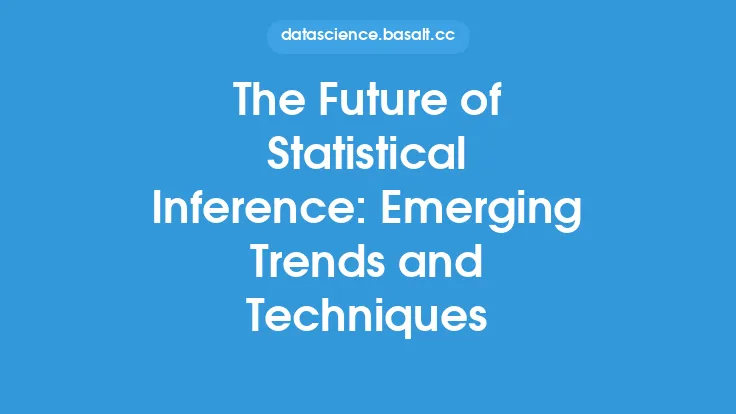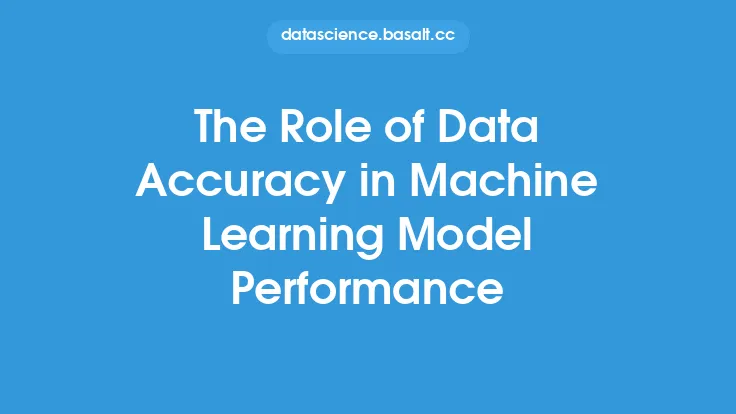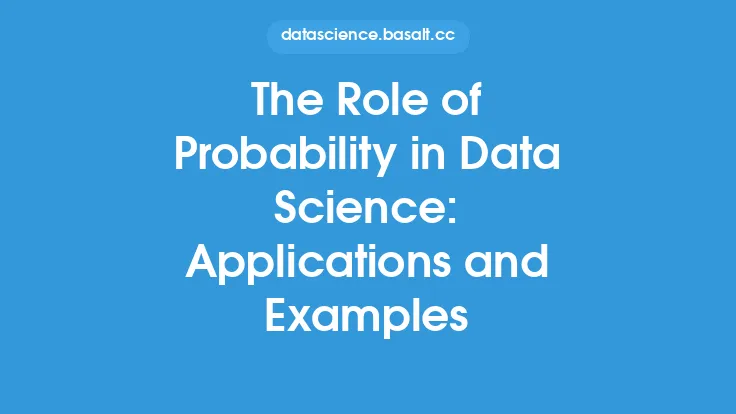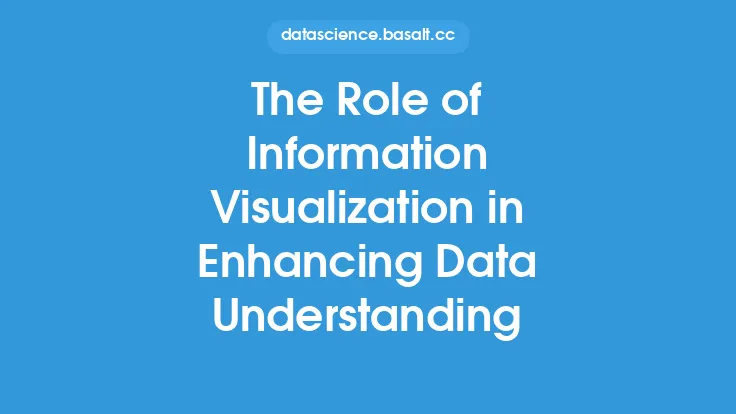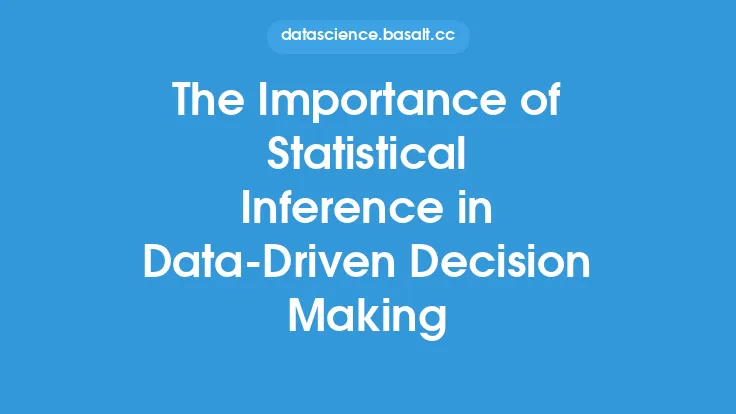Statistical inference is a crucial component of machine learning, as it enables the development of models that can make predictions or decisions based on data. At its core, statistical inference is concerned with making conclusions or inferences about a population or phenomenon based on a sample of data. In the context of machine learning, statistical inference is used to learn patterns and relationships in data, and to make predictions or decisions based on that data.
Introduction to Statistical Inference in Machine Learning
In machine learning, statistical inference is used to develop models that can learn from data and make predictions or decisions. This is typically done using a combination of statistical and computational techniques, such as regression, classification, and clustering. Statistical inference is used to estimate the parameters of a model, such as the coefficients of a regression equation, and to evaluate the performance of the model. This is typically done using techniques such as maximum likelihood estimation, Bayesian inference, and cross-validation.
Types of Statistical Inference in Machine Learning
There are several types of statistical inference that are commonly used in machine learning, including:
- Parametric inference: This type of inference assumes that the data follows a specific distribution, such as a normal or binomial distribution. Parametric inference is typically used for regression and classification problems.
- Non-parametric inference: This type of inference does not assume a specific distribution for the data. Non-parametric inference is typically used for clustering and dimensionality reduction problems.
- Semi-parametric inference: This type of inference assumes that the data follows a specific distribution, but also allows for some flexibility in the model. Semi-parametric inference is typically used for problems that involve both regression and classification.
Statistical Inference Techniques in Machine Learning
There are several statistical inference techniques that are commonly used in machine learning, including:
- Maximum likelihood estimation: This technique is used to estimate the parameters of a model by maximizing the likelihood of the data given the model.
- Bayesian inference: This technique is used to estimate the parameters of a model by updating the prior distribution of the parameters based on the data.
- Cross-validation: This technique is used to evaluate the performance of a model by splitting the data into training and testing sets.
- Bootstrap sampling: This technique is used to estimate the variability of a model by resampling the data with replacement.
Applications of Statistical Inference in Machine Learning
Statistical inference has a wide range of applications in machine learning, including:
- Predictive modeling: Statistical inference is used to develop models that can make predictions based on data. For example, a regression model can be used to predict the price of a house based on its features.
- Classification: Statistical inference is used to develop models that can classify data into different categories. For example, a classification model can be used to classify images as either cats or dogs.
- Clustering: Statistical inference is used to develop models that can group similar data points together. For example, a clustering model can be used to group customers based on their buying behavior.
- Recommendation systems: Statistical inference is used to develop models that can recommend products or services based on a user's past behavior.
Challenges and Limitations of Statistical Inference in Machine Learning
While statistical inference is a powerful tool for machine learning, it also has several challenges and limitations, including:
- Overfitting: Statistical inference models can suffer from overfitting, which occurs when the model is too complex and fits the noise in the data rather than the underlying pattern.
- Underfitting: Statistical inference models can also suffer from underfitting, which occurs when the model is too simple and fails to capture the underlying pattern in the data.
- Model selection: Statistical inference models require the selection of a model, which can be challenging, especially when there are many possible models to choose from.
- Interpretability: Statistical inference models can be difficult to interpret, especially when the model is complex or has many parameters.
Best Practices for Statistical Inference in Machine Learning
To get the most out of statistical inference in machine learning, it's essential to follow best practices, including:
- Data preprocessing: Data should be preprocessed to ensure that it is clean, complete, and in a suitable format for analysis.
- Model selection: The model should be selected based on the research question and the characteristics of the data.
- Model evaluation: The model should be evaluated using techniques such as cross-validation and bootstrap sampling.
- Interpretability: The model should be interpreted in the context of the research question and the characteristics of the data.
Conclusion
Statistical inference is a crucial component of machine learning, as it enables the development of models that can make predictions or decisions based on data. By understanding the types of statistical inference, techniques, and applications, as well as the challenges and limitations, machine learning practitioners can develop effective models that can drive business value and inform decision-making. By following best practices, machine learning practitioners can ensure that their models are reliable, accurate, and interpretable, and that they provide valuable insights into the data.
